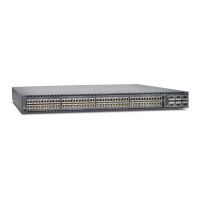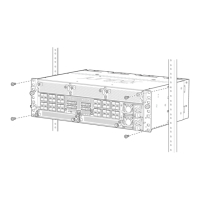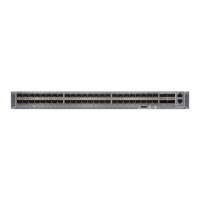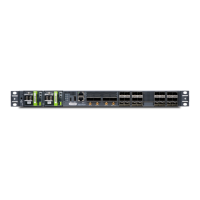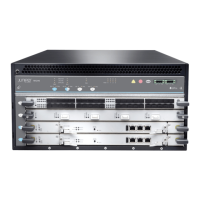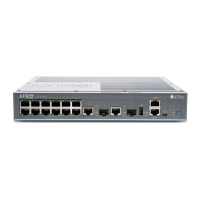Bit error rate test (BERT) patterns with all binary 1s (ones) received by CT1/CE1 interfaces
on Circuit Emulation MICs configured for SAToP do not result in an alarm indication signal
(AIS) defect. As a result, the CT1/CE1 interfaces remain up.
Configuring CT1 Ports Down to T1 Channels
To configure a CT1 port down to a T1 channel, use the following procedure:
NOTE: To configure a CE1 port down to the E1 channel, replace ct1 with ce1
and t1 with e1 in the procedure.
1. In configuration mode, go to the [edit interfaces ct1-mpc-slot/mic-slot/port-number]
hierarchy level.
[edit]
user@host# edit interfaces ct1-mpc-slot/mic-slot/port-number
For example:
[edit]
user@host# edit interfaces ct1-1/0/0
2. On the CT1 interface, set the no-partition option and then set the interface type as T1.
[edit interfaces ct1-mpc-slot/mic-slot/port-number]
user@host# set no-partition interface-type t1
In the following example, the ct1-1/0/1 interface is configured to be of type T1 and to
have no partitions.
[edit interfaces ct1-1/0/1]
user@host# set no-partition interface-type t1
Configuring CT1 Ports Down to DS Channels
To configure a channelized T1 (CT1) port down to a DS channel, include the partition
statement at the [edit interfaces ct1-mpc-slot/mic-slot/port-number] hierarchy level:
NOTE: To configure a CE1 port down to a DS channel, replace ct1 with ce1 in
the following procedure.
1. In configuration mode, go to the [edit interfaces ct1-mpc-slot/mic-slot/port-number]
hierarchy level.
[edit]
user@host# edit interfaces ct1-mpc-slot/mic-slot/port-number
For example:
[edit]
user@host# edit interfaces ct1-1/0/0
Copyright © 2017, Juniper Networks, Inc.202
ACX Series Universal Access Router Configuration Guide
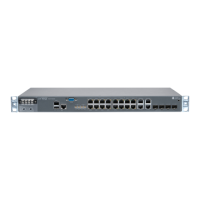
